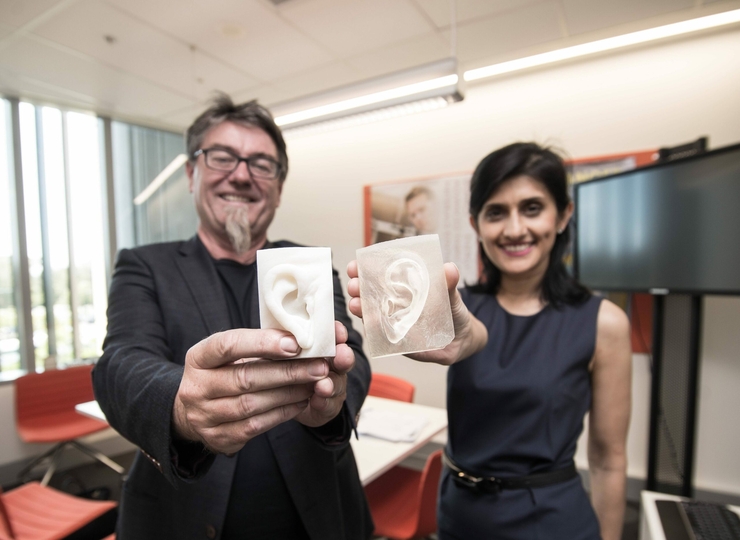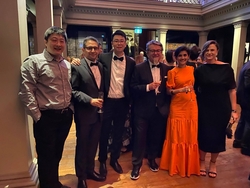An innovative 3D-printed device designed to help children with hearing problems caused by ear deformities has been recognised at a prestigious national science awards ceremony.
The bio-ear project, co-led by Sydney Adventist Hospital's Associate Professor Payal Mukherjee, was a finalist in the 'Excellence in Interdisciplinary Scientific Research' category at the 2022 Australian Museum Eureka Prizes.
The country's most comprehensive national science awards honour excellence across the areas of research and innovation, leadership, science engagement, and school science, with 45 entries shortlisted in the 14 sections.
A/Prof Mukherjee spearheaded the project, called NEW EARS (iNtegrated nEtWorks for Ear Additive Reconstructive Science), along with Professor Gordon Wallace from University of Wollongong.
It is an Australian first for hybrid bio-printed ear reconstruction, achieved by combining the science of 3D printing, cell biology and materials engineering.
A/Prof Mukherjee, an ear, nose and throat (ENT) specialist, said conditions such as microtia – meaning incomplete or abnormally-formed ears – could significantly slow a child's development by compromising language acquisition, and also lead to bullying and psychosocial harm.
"A child with microtia should ideally have their hearing rehabilitation surgery planned by age four or five, but hearing rehabilitation and ear reconstruction are seldom co-ordinated as the ear reconstruction is often delayed until the child's ear is fully grown at around age 10," she said.
"With children commonly submitted to repeated surgical procedures, many become so traumatised that by their early teens, they start to reject healthcare – even if it means living with deafness and deformed, chronically-infected ears."
NEW EARS addresses a previously challenging surgical pathway for children with ear deformity by reducing morbidity and, importantly, co-ordinating hearing rehabilitation and performing ear reconstruction at the same time.
Its solution includes, firstly, research into regenerating 3D-printed ear cartilage using a technology called bioprinting, a project currently in the second phase of animal trials.
The shape of the ear is uniquely crafted for each child. The clinical research and hospital deployment part of the study was developed at New South Wales' largest private healthcare facility – also known as the San – by A/Prof Mukherjee and the Wollongong team using its onsite own cell culture laboratory at the co-located Australasian Research Institute.
The team has also developed a 3D-printed prosthetic ear using silicone technology, as an interim, low-cost, and more tangible solution for patients undergoing chemoradiotherapy after surgery.
With Sophie Fleming, a clinical anaplastologist on the NEW EARS team, the researchers are running a clinical trial on this device.
"In both the bio-ear and the prosthetic silicone ear, because these are 3D-printed, age is no restriction anymore, which means children with microtia can get their hearing back sooner," A/Prof Mukherjee said.
"Other benefits include remote planning and, importantly, access for rural and remote patients.
"Cost is minimised, as are the number of trips to the clinic as technology and clinical services are developed side-by-side in this project."
A/Prof Mukherjee said the prosthetic ear was a "very important option" for patients recovering from morbid resections for head and neck cancer.
"We continue to innovate the efficiency by which we deliver care to restore both the structure and the function of the ear," she said.
"Digital solutions are allowing us to care for interstate and international patients, which we are feeding back into the research pathway to improve any technology barriers that prevent future access."
Read more: Ending the sound of silence
Read more: How the San stepped up to COVID challenge
Next Safety And Quality:
27/9/2022 Double distinction for San's quality of care
Previous Safety And Quality:
31/8/2022 Light shines on new Parkinson's treatment
![[APHA]](/images/logo_apha.svg)

